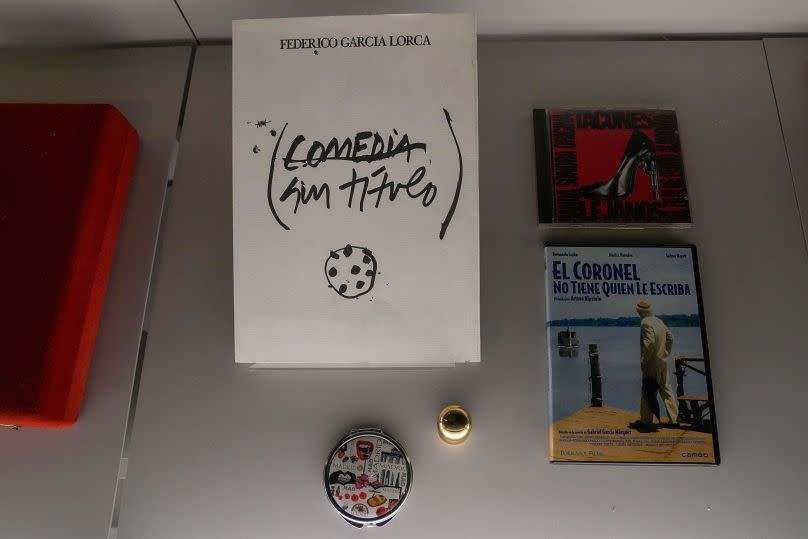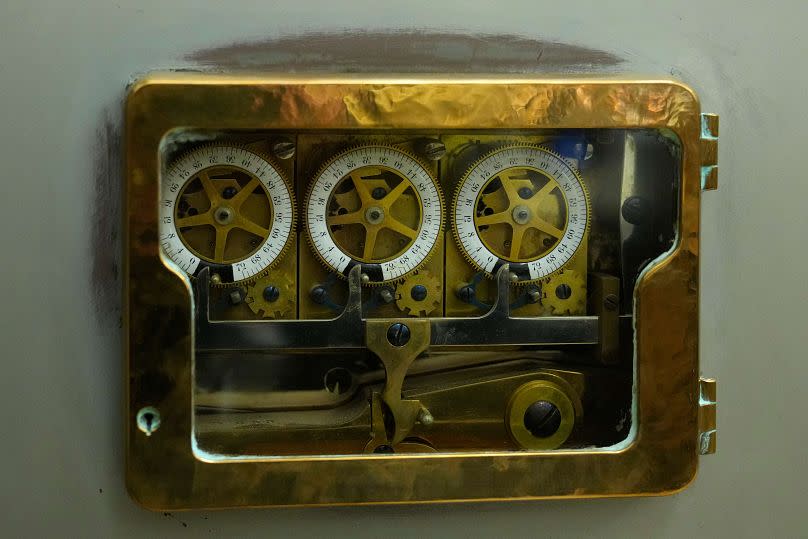'Caja de las Letras': Inside an old Madrid bank vault full of literary treasures

The headquarters of the Cervantes Institute, a global non-profit promoting the Spanish language and culture named after the "Don Quixote" writer, has been housed in the Caryatid Building since 2006. It was originally constructed in the early years of the 20th century as the grand bank for Banco Español del Río de la Plata on the historic Alcalá street in central Madrid.
Today, the original bank vault has been renamed the “Caja de las Letras” and it contains countless treasures, more literary than literal.
Rediscovered Caravaggio masterpiece goes on show in Madrid's Prado museum
Is it happening again? David Lynch announces 'something to see and hear' for June 5
Among the 1,700 drawers of the old safe, there is Nicanor Parra's typewriter, José Saramago's phone book, a bowler hat belonging to musician Joaquín Sabina, the Nobel medal for Medicine won in 1906 by Ramón y Cajal, a broken brass bracelet that belonged to Elena Poniatowska's father and, above all, many books, drafts and manuscripts, some of them unpublished.
It’s all part of an initiative by the Cervantes Institute to preserve and document the richness of Hispanic culture.
“The initiative is a response to reality,” explains Luis García Montero, Cervantes Institute director.

“The Cervantes Institute headquarters building was a financial building. The Banco del Río de la Plata was located here at the beginning of the 20th century and when, after passing through different financial institutions, it came to the Cervantes Institute, what we wanted was to give meaning to a place that was the great vault where all the rental boxes were located, and we took advantage of it in our commitment to culture,” García Montero says.
The Cervantes Institute is in charge of contacting the depositors, despite receiving offers from institutions, universities and foundations to join the initiative. With few exceptions, the bequests will remain for several decades, or even indefinitely, in the vault before returning to their owners or being incorporated into its Heritage Library.

García Montero notes the poetry of the building’s transition: “The true wealth of a country is its culture. And each rental box where people used to leave their money, jewellery, documents, has become a place to pay tribute to the great names, the great personalities of our literature.”
Behind the heavy metal door, which opens onto a long two-story hallway with walls lined with metal lockers of various sizes – many of which show signs of age – are works by Pablo Neruda, or Federico García Lorca, among others.
But there are also more mundane objects such as workbooks, personal photographs and drawings. Some of the contributions came in the form of post-mortem tributes, such as the sample of soil from Aracataca, the birthplace of Colombian Nobel Literature laureate Gabriel García Márquez – the first of almost 60 boxes “in memoriam”.

“Great historical documentation is just as important as everyday life,” García Montero says. “I would dare to say that I would love to get as a legacy a first edition of Quijote de La Mancha by Miguel de Cervantes or a first edition, because we already have a second edition of Nebrija's Spanish grammar. But I also like to have, for example, a legacy of Joan Manuel Serrat that reflects his relationship with poetry.”

 Yahoo News
Yahoo News 
